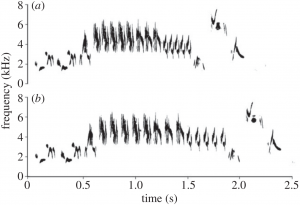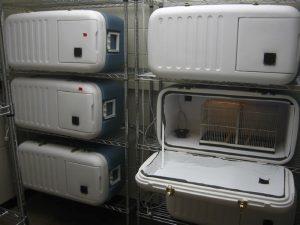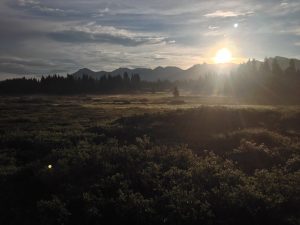 Synopsis: We study the ultimate and proximate factors controlling flexibility in reproductive decisions. Of particular interest is the study of life-history trade-offs, reproductive effort, and how songbirds adaptively regulate egg size, clutch size, and general aspects of family planning. We are also interested in courtship effort and mate-choice and how individuals integrate the ecological and social information that adaptively guides these decisions. Recently, we have begun to explore the relationship between long-distance migration and photoperiodism, as the multiple photoperiodic schedules to which long-distance migrants are exposed cannot be reconciled with current understandings of photoperiodic thresholds. For a more complete understanding of our research questions, approaches, and methodologies, visit the Publications page in order to view the laboratory’s recent publications.
Synopsis: We study the ultimate and proximate factors controlling flexibility in reproductive decisions. Of particular interest is the study of life-history trade-offs, reproductive effort, and how songbirds adaptively regulate egg size, clutch size, and general aspects of family planning. We are also interested in courtship effort and mate-choice and how individuals integrate the ecological and social information that adaptively guides these decisions. Recently, we have begun to explore the relationship between long-distance migration and photoperiodism, as the multiple photoperiodic schedules to which long-distance migrants are exposed cannot be reconciled with current understandings of photoperiodic thresholds. For a more complete understanding of our research questions, approaches, and methodologies, visit the Publications page in order to view the laboratory’s recent publications.
Field Research: In the summer of 2005,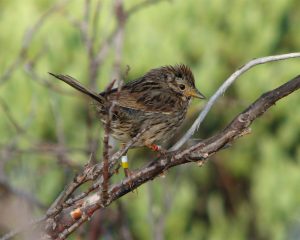 we initiated what has become a long-term study on the reproductive biology of a population of Lincoln’s sparrows (Melospiza lincolnii) breeding on an approximately 20-hectare subalpine meadow at Molas Pass in the San Juan Mountains of Colorado, U.S.A. The picture above, used as the banner for this website, is a view from the study area of the Grenadier Range. This is a particularly tractable system for addressing the above interests, in part due to the density of breeding birds, the ease of finding and monitoring their nests, the complexity of their song behavior, and their suitability for laboratory studies.
we initiated what has become a long-term study on the reproductive biology of a population of Lincoln’s sparrows (Melospiza lincolnii) breeding on an approximately 20-hectare subalpine meadow at Molas Pass in the San Juan Mountains of Colorado, U.S.A. The picture above, used as the banner for this website, is a view from the study area of the Grenadier Range. This is a particularly tractable system for addressing the above interests, in part due to the density of breeding birds, the ease of finding and monitoring their nests, the complexity of their song behavior, and their suitability for laboratory studies.
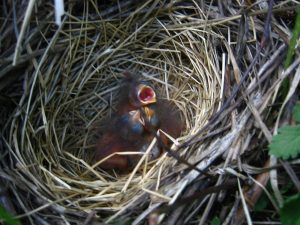 Keith Sockman, a few undergraduate students, and sometimes graduate students, post-docs, and technicians travel to the field site in the summer, where they camp in semi-remote conditions for up to two months. There, they capture, band, and measure birds; collect digital audio recordings of song for subsequent computer-assisted analysis in the laboratory; monitor egg laying, incubation, and nestling development; collect a variety of meteorological data, such as temperature, rainfall, and snow pack; and quantify forage abundance. We then link these measures to behavioral cues and responses in an effort to better understand the ecological factors regulating reproductive decision-making.
Keith Sockman, a few undergraduate students, and sometimes graduate students, post-docs, and technicians travel to the field site in the summer, where they camp in semi-remote conditions for up to two months. There, they capture, band, and measure birds; collect digital audio recordings of song for subsequent computer-assisted analysis in the laboratory; monitor egg laying, incubation, and nestling development; collect a variety of meteorological data, such as temperature, rainfall, and snow pack; and quantify forage abundance. We then link these measures to behavioral cues and responses in an effort to better understand the ecological factors regulating reproductive decision-making.
Laboratory Research: With knowledge of the 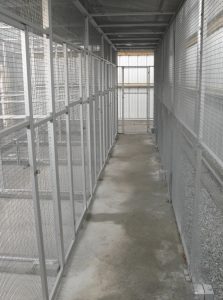 natural history of an organism that we acquire through field research (see above), we conduct controlled laboratory studies to examine how ecological and social cues orchestrate complex reproductive decisions, such as courtship effort and mate-choice. The Sockman Lab has a full complement of laboratory resources for birds, including outdoor aviaries for long-term housing and more naturalistic experiments, several light- and temperature-controlled indoor rooms, a fully-equipped “wet” lab with HPLC by electrochemical detection, a high-powered light microscope, an automatic-sectioning cryostat, state-of-the-art computers running software for image and song analysis, and sound-attenuating chambers equipped with speakers, microphones, video cameras, and video displays to expose individual, wild-caught birds to social, acoustic, visual, photoperiodic, and other stimuli while recording mate-choice, courtship and other behaviors.
natural history of an organism that we acquire through field research (see above), we conduct controlled laboratory studies to examine how ecological and social cues orchestrate complex reproductive decisions, such as courtship effort and mate-choice. The Sockman Lab has a full complement of laboratory resources for birds, including outdoor aviaries for long-term housing and more naturalistic experiments, several light- and temperature-controlled indoor rooms, a fully-equipped “wet” lab with HPLC by electrochemical detection, a high-powered light microscope, an automatic-sectioning cryostat, state-of-the-art computers running software for image and song analysis, and sound-attenuating chambers equipped with speakers, microphones, video cameras, and video displays to expose individual, wild-caught birds to social, acoustic, visual, photoperiodic, and other stimuli while recording mate-choice, courtship and other behaviors.
